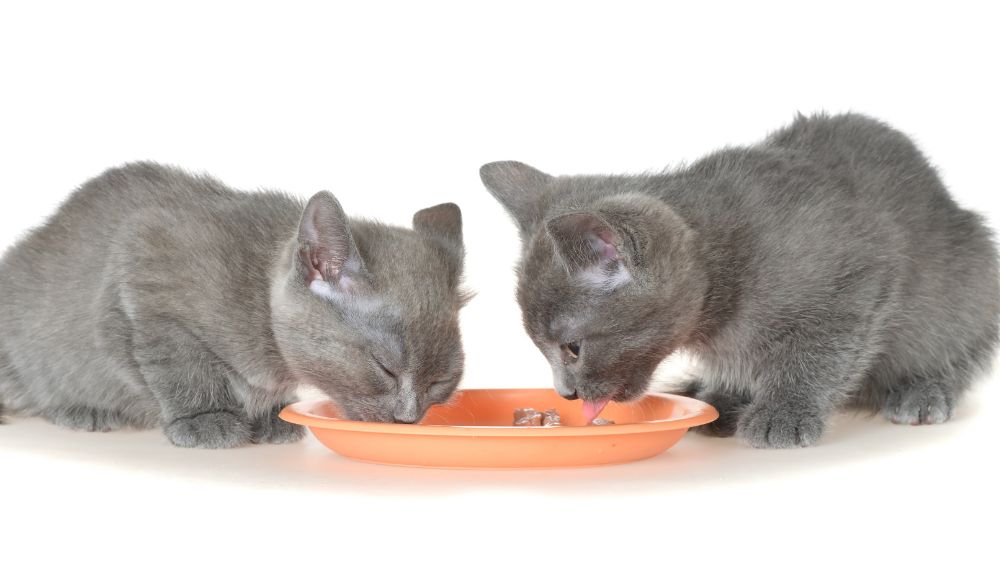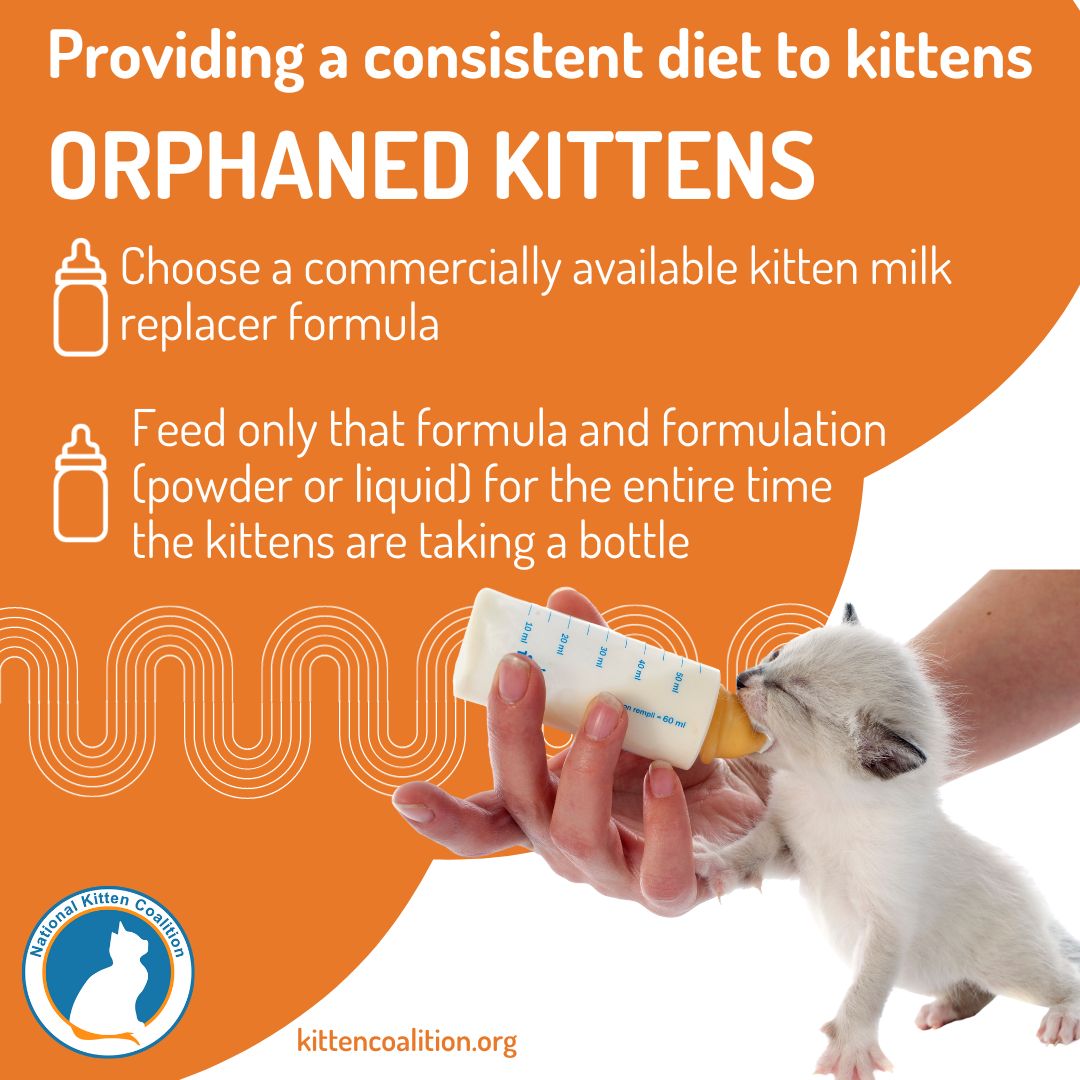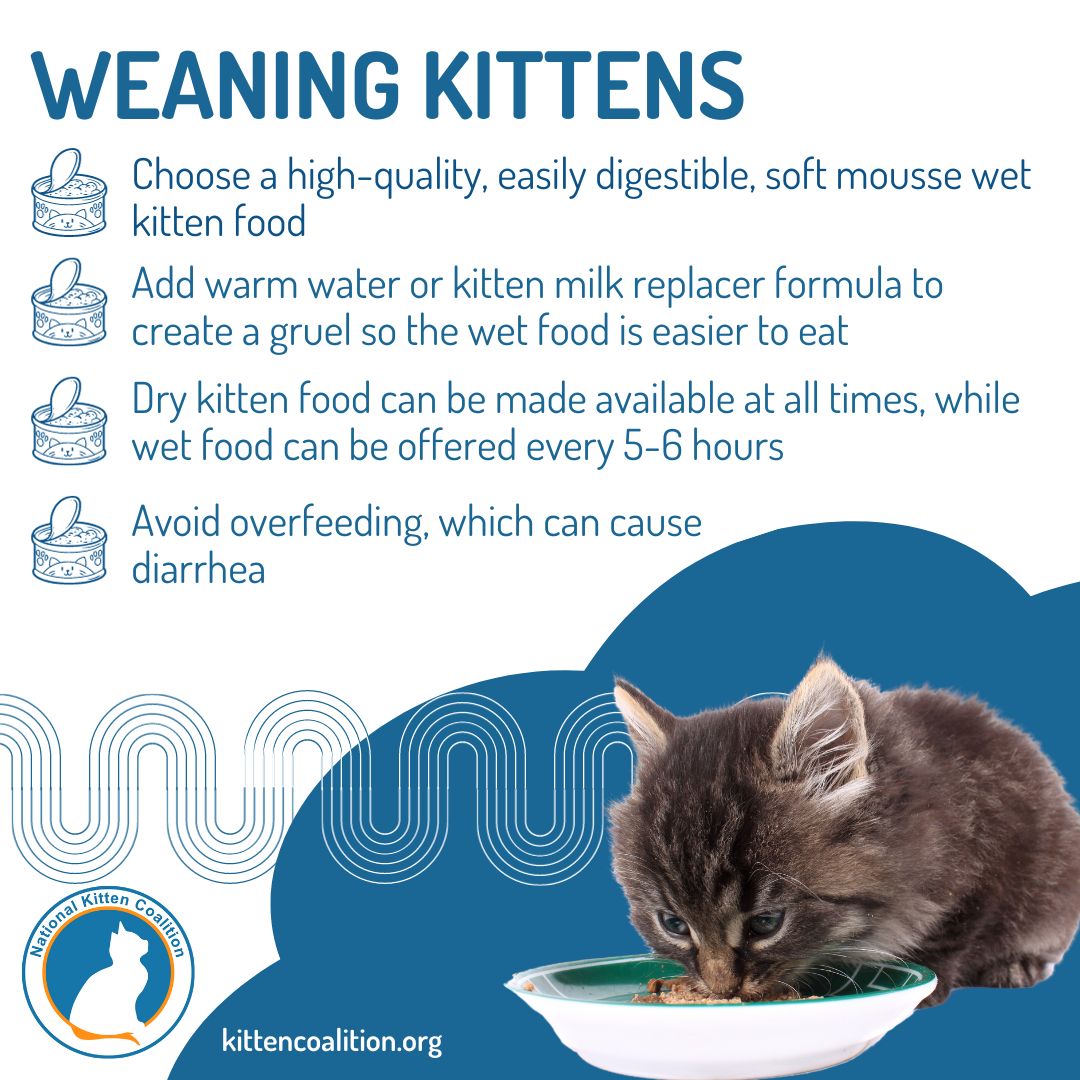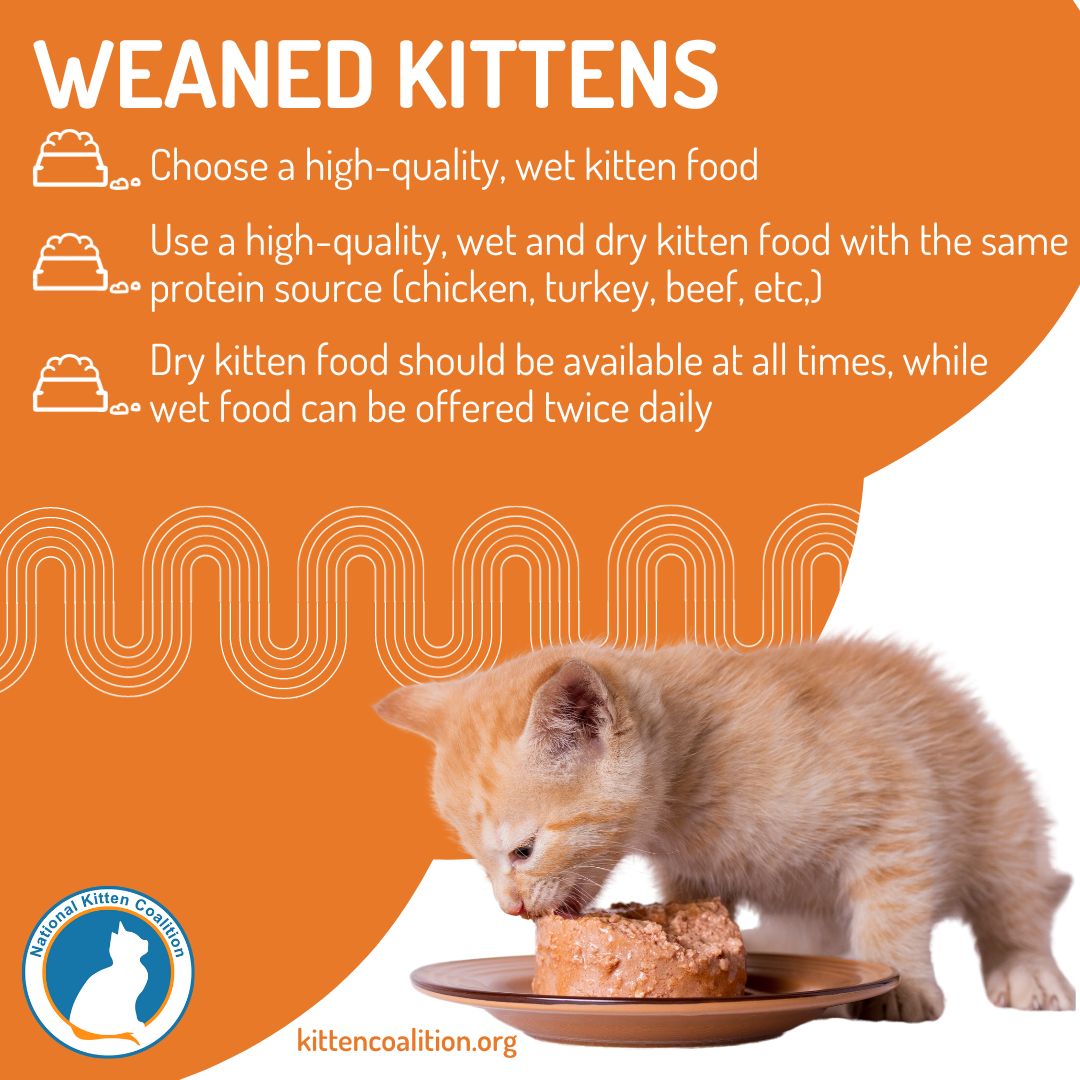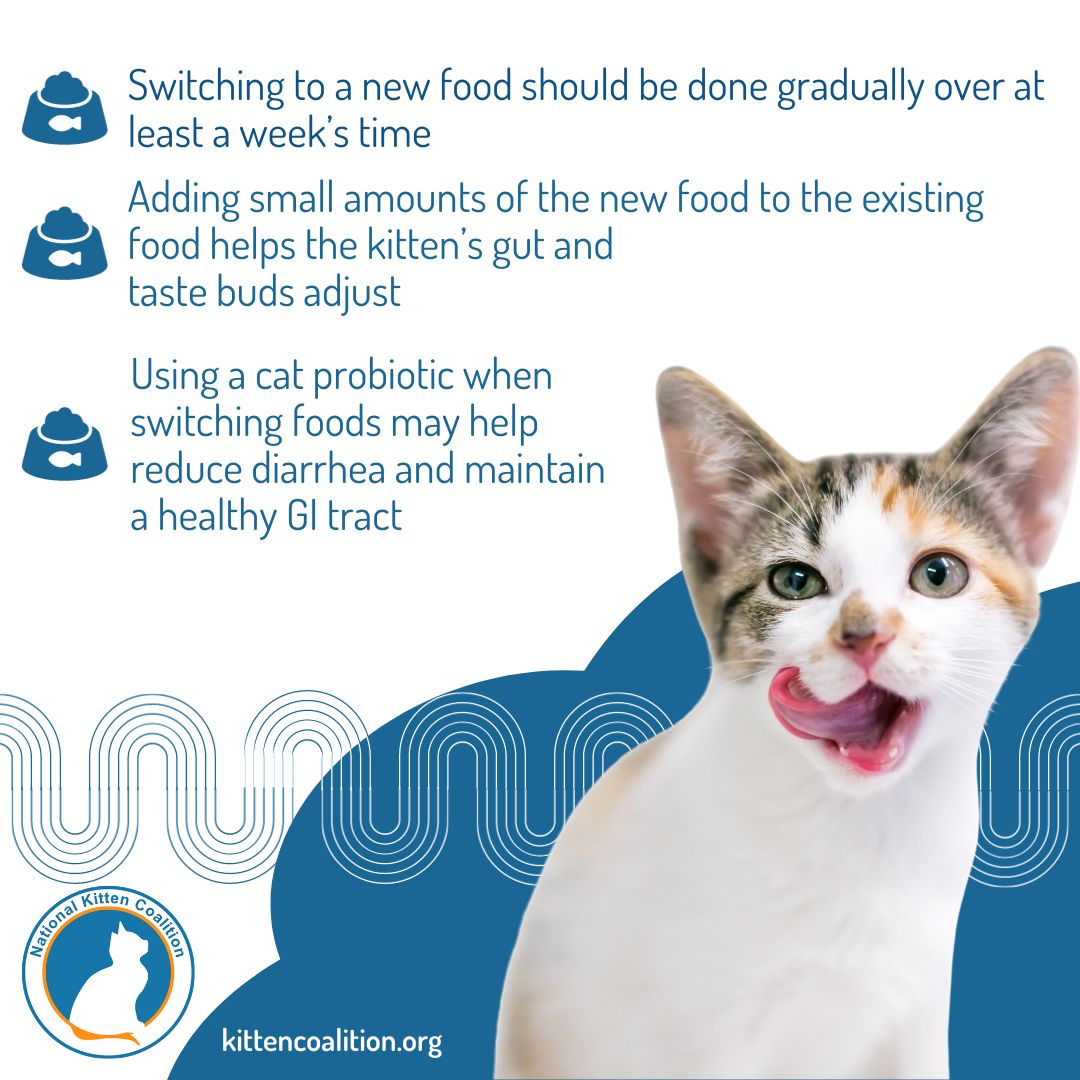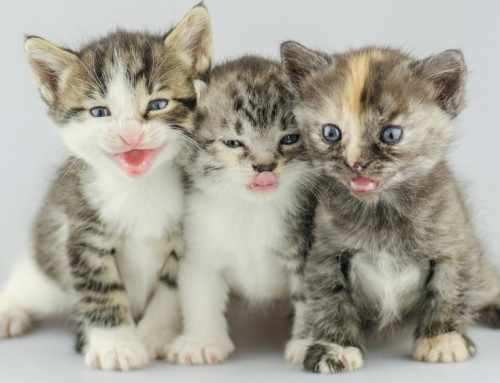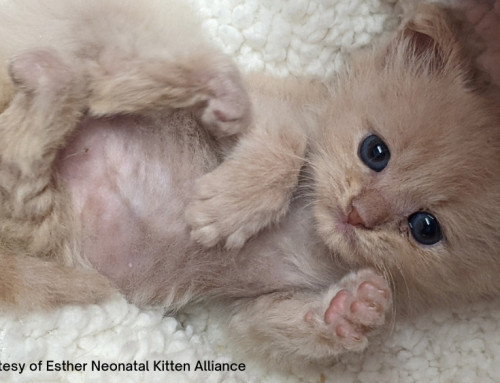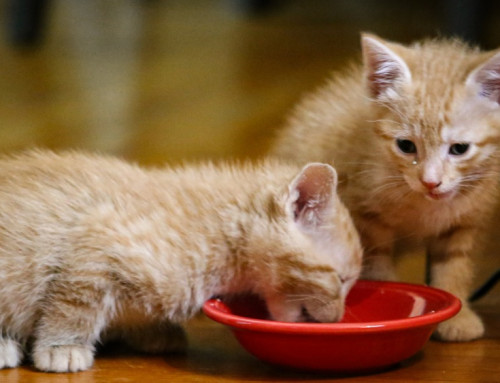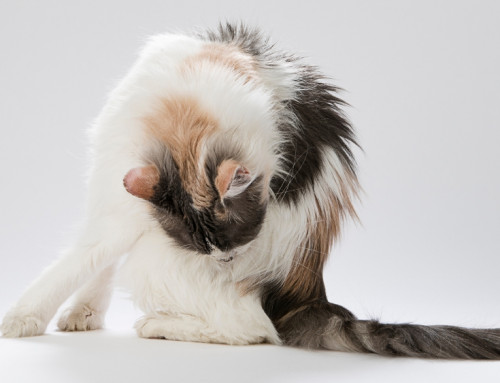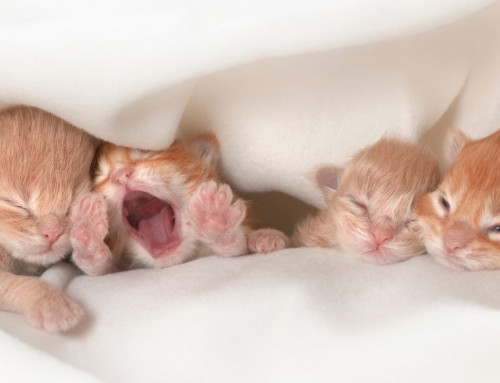Share this resource or email it to a friend!
The Importance of Providing a Consistent Diet to Kittens and Cats
While feeding a consistent diet is important for all cats, it is especially important to feed kittens a consistent diet due to their developing gastrointestinal system. Diarrhea is a very common occurrence in kittens and can often be attributed to an inconsistent diet or too rapid a change of diet.
Guidelines for Providing a Consistent Diet to Kittens and Cats
Weigh kittens every day at the same time, preferably before their first feeding, to be sure they’re gaining weight. Below are some guidelines for feeding kittens and cats:
- Orphaned Kittens
Choose one of the commercially available kitten milk replacer formulas such as Breeder’s Edge Foster Care® or PetAg KMR®, and feed only that formula for the entire time the kittens are taking a bottle.
- Weaning Kittens
Feed a high-quality, easily digestible kitten food, such as Royal Canin Mother and Babycat, while weaning. The wet food should be a soft mousse, and warm water or kitten milk replacer formula can be added to create a gruel, making the wet food easier to eat. Offer a small amount under supervision as often as you were offering the bottle, typically every 5-6 hours. Dry kitten food can be made available at all times for weaning kittens. Some kittens, despite their age, may not be physically or emotionally ready to wean. Do not withhold the bottle to force them to wean. In addition, if they are not eating enough gruel, supplement them with the bottle.
- Weaned Kittens
Choose a high-quality wet kitten food, and use the same protein source (chicken, turkey, beef, etc,) in both their wet and dry foods. It is not recommended that multiple brands or multiple types of one brand be mixed when feeding kittens. Even though this may be tempting when different foods are donated or on sale, it can be detrimental to a kitten’s overall health. Dry kitten food should be available at all times, while wet food can be offered twice daily.
- Adult cats
Choose a high-quality adult food, and use the same protein source in both wet and dry foods.
How to Switch Foods of Kittens and Cats
Whenever switching over to a new food, whether due to weaning a kitten, a kitten needing to be switched over to adult food or the caregiver wanting to change brands to meet the changing needs of their adult cat, do so very gradually over at least a week’s time.
If switching kibble, add in a few pieces of the new kibble to the existing kibble, have a 50:50 mix by mid-week, and then be switched over to the new food by the end of a week or even longer if a cat’s stomach is overly sensitive.
If switching wet food, add a small amount of the new food to the existing food each day until only the new food is being fed. In addition to helping the gut adjust, a gradual introduction helps the kitten or cat adjust to the new taste. When switching foods, adding a probiotic for cats, such as Fortiflora®, Bene-Bac® Plus Pet Powder or Proviable®, to their food is especially helpful in reducing diarrhea and maintaining a healthy digestive tract.

